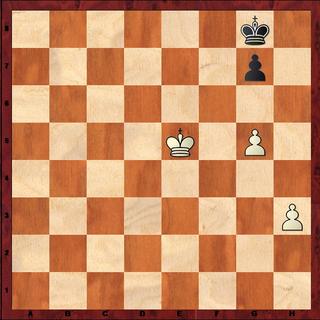White to Play
Published in Chess Puzzles

In this, week ten (!) of chess summer school, we’re going back to king and pawn endings to see if you remember some basic principles. This week is based on a contest run by GM John Nunn in British Chess Magazine in 1999.
- Solution: If you tried the “obvious” move for White, it’s only a draw: 1.g6 Kf8 2.Ke6 Ke8 3.h4 Kf8 4.Kd7 Kg8 5.Ke8 Kh8 6.h5 Kg8 7.Ke7 Kh8 8.h6 Kg8! [8...gxh6?? 9.Kf8 h5 10.g7+ Kh7 11.g8Q+ Kh6 12.Qg7#] and there is no way for White to make progress. AND, if you tried 1.Kf4 Kf8 2.Kg4 Kg8 3.Kh5 Kh7 4.h4 g6+ 5.Kg4 Kg7 6.Kf4 Kf7 7.Ke5 Ke7, White has run out of winning chances. You can see how players might choose either line and you can see that this is a realistic looking endgame. The winning process is: 1.Kf4 Kf8 2.Kg4 Kg8 3.Kh5 Kh7 4.Kh4 Kg6 5.Kg4 Kf7 6.Kf5 Kf8 7.Kg6 Kg8 8.h4 Kh8 9.Kf7 Kh7 10.h5 Kh8 [The key to winning this is that you want the White king on f7 and the Black king on h7 with White to move. Then, pushing the pawn to h6 will win. So, a little dance takes place until White can get that position. It means you have to see the end pawn push that wins and know why it wins to do all these fancy king moves. It's amazing how complex simple king and pawn endings can be!]11.Ke8 [11.h6?? Kh7! 12.hxg7 stalemate!]11...Kg8 12.Ke7 Kh7 13.Kf8 Kh8 14.Kf7 Kh7 15.h6 g6 16.Kf6 Kg8 17.Kxg6 and wins.
Send questions and comments to PTamburro@aol.com.






